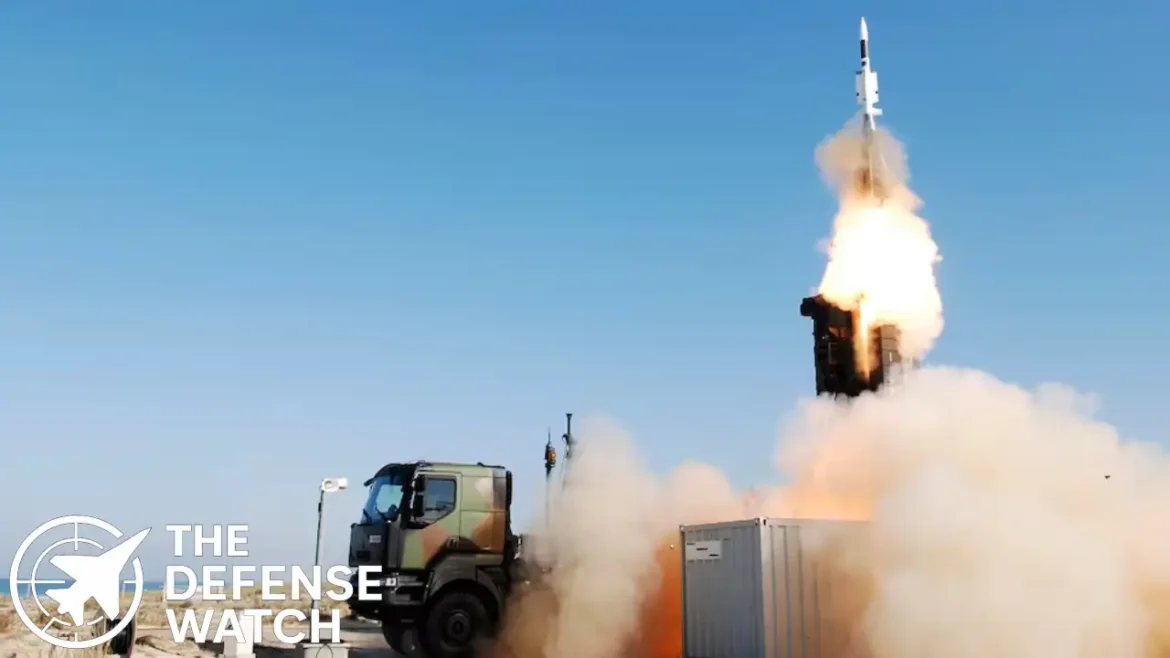Denmark Makes Historic Air Defense Investment
Denmark has selected the French-Italian SAMP/T surface-to-air missile system to provide the long-range backbone of its new ground-based air defense network, bypassing the U.S.-made Patriot system. The decision, announced Friday, represents the largest defense investment in Danish history—58 billion kroner ($9.1 billion)—and marks a milestone in Europe’s push for greater defense independence.
The acquisition covers eight medium- and long-range systems, two of which will be SAMP/T units. According to broadcaster TV 2, this makes Denmark the first European Union export customer for the system, which until now was fielded only by France and Italy within the EU. By contrast, at least seven European countries currently operate the U.S. Patriot system.
“The war in Ukraine clearly demonstrates the need for a modern ground-based air defense system consisting of multiple integrated systems that provide multiple layers of airspace protection,” Danish Chief of Defence Gen. Michael Hyldgaard said.
Europe’s Answer to Patriot
SAMP/T—developed by Eurosam, a joint venture of Thales and MBDA—was designed to counter a broad spectrum of aerial threats, from fighter aircraft to cruise and tactical ballistic missiles. The system employs the Aster 30 B1 and B1NT interceptors, which can reach speeds up to Mach 4.5 and engage targets out to 150 kilometers.
Each SAMP/T battery typically consists of a 360-degree AESA radar, a fire-control center, and multiple launchers that can discharge eight Aster missiles in under ten seconds. France fields its version with Thales GF300 radars, while Italy uses Leonardo’s Kronos GMHP radar and CAMM-ER short-range interceptors.
Ukraine has also received at least two donated SAMP/T systems, with one deployed to protect Kyiv. Operational reports suggest the system has successfully intercepted Russian ballistic missile threats.
Building a Layered Defense
Denmark’s new investment more than doubles its earlier budget estimate of 19–25 billion kroner. The Ministry of Defence confirmed that the eight systems will include both long-range (SAMP/T) and medium-range elements. For the latter, Denmark is evaluating options from Kongsberg (NASAMS), MBDA (VL MICA), and Diehl Defence (IRIS-T SLM).
“The decision to go with more than one or two suppliers enables shorter delivery times,” said Lt. Gen. Per Pugholm Olsen, head of the Defence Acquisition and Logistics Organisation. “This means that we can achieve our goal of a comprehensive ground-based air defense capacity as quickly as possible.”
The first medium-range systems are expected to be operational by late 2025.
Strategic and Industrial Considerations
Beyond operational capability, Copenhagen’s decision reflects growing concerns over dependence on U.S. suppliers. The European Commission has repeatedly urged member states to strengthen local defense industries. In parallel, U.S. disengagement from European security—amplified by former President Donald Trump’s threats to NATO allies Denmark and Canada—has raised doubts about relying solely on American systems.
As part of the SAMP/T purchase, Denmark is demanding offset agreements worth over 10 billion kroner ($1.6 billion) for its domestic defense industry. These offsets may involve direct procurement from Danish companies or joint development partnerships.
“This is the biggest investment ever made in ground-based air defense to be deployed across Denmark,” Danish Defence Minister Troels Lund Poulsen said. “There’s a use for big and bold decisions if we are to strengthen the armed forces’ combat capability and increase security for the Danish people.”
Analysis: Implications for U.S. Defense and NATO
Denmark’s choice of SAMP/T over Patriot underscores a growing European trend toward defense autonomy and industrial sovereignty. While the Patriot system remains the NATO benchmark, the SAMP/T’s success in Ukraine and its European origin make it politically attractive.
For the United States, the decision raises questions about future European procurement. Washington recently offered Denmark two Patriot systems configured with the Integrated Air and Missile Defense Battle Command System (IBCS) for $8.5 billion. Denmark’s rejection suggests that even close U.S. allies may increasingly prioritize European alternatives—particularly when political reliability and industrial returns are factored in.
This procurement also intersects with the Germany-led European Sky Shield Initiative (ESSI), which Berlin launched around the Patriot system. France and Italy had previously snubbed the project, but Denmark’s move could reignite debates on aligning SAMP/T with ESSI to avoid duplication and ensure NATO-wide interoperability.
Conclusion: A Signal for Europe’s Defense Future
Denmark’s decision to adopt SAMP/T over Patriot marks a pivotal moment in European defense integration. It sends a signal that EU members are willing to pay more for European solutions if it means greater sovereignty, faster delivery, and industrial participation.
For NATO, the key challenge will be ensuring that European and U.S. systems remain interoperable in joint operations. As Russia’s war in Ukraine continues to drive demand for advanced air defense, Denmark’s landmark deal could accelerate Europe’s long-term shift toward self-reliance in defense procurement.

